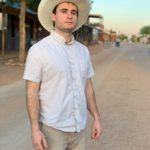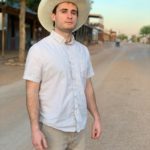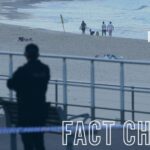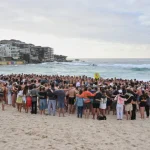
A new discovery in the Holy Land may shine a light on the personal residence of two of Christ’s closest disciples.
An inscription on the floor of a church ruins discovered on the coast of the Sea of Galilee in Israel has led archaeologists to believe they’ve discovered the place where the apostles Andrew and Peter lived in biblical times.
The Gospel of John describes Andrew and Peter as brothers.
The two men are identified as residents of the town of Bethsaida, which has long since ceased to exist.
Researchers of the El Araj Excavation Project believe that a Byzantine basilica they’ve uncovered on the north side of the sea was built on the ruins of old Bethsaida — namely, on the house of Peter and Andrew.
The site is today situated in Israel’s Betiha nature preserve.
The Greek inscription in the church identifies Peter as “chief and commander of the heavenly apostles,” leading archaeologists to believe the church was dedicated in his honor.
The church floor also identifies a donor named Constantine; potentially a reference to the Roman Emperor who embraced Christianity in the early 4th century.
Medieval Christian authors referred to a Holy Land basilica that was built over the shared residence of the apostles, and the experts think they’ve found the site in question.
Should this ancient church be uncovered?
Yes: 97% (66 Votes)
No: 3% (2 Votes)
“This discovery is our strongest indicator that Peter had a special association with the basilica, and it was likely dedicated to him,” said Steven Notley, academic director of the dig.
“Since Byzantine Christian tradition routinely identified Peter’s home in Bethsaida, and not in Capernaum as is often thought today, it seems likely that the basilica commemorates his house.”
Academics of Kinneret College and Nyack College collaborated on the dig in Israel.
Other sponsors of the project include the Center for the Study of Ancient Judaism and Christian Origins, the Museum of the Bible, the Lanier Theological Library Foundation and HaDavar Yeshiva.
Archaeologists plan to restore more of the buried church in October, and they hope to uncover more inscriptions from the original building.
They’re also comparing their finds to the writings of the Jewish historian Flavius Josephus, who indicated that biblical Bethsaida became a village called Julias.
Peter and Andrew became Christ’s disciples when they worked as fishermen in Galilee.
Peter is one of the most-mentioned figures in the New Testament and became a leader of the early Christian church after Christ’s earthly ministry.
Christian tradition holds that Peter served as the bishop of Antioch in modern-day Syria before his eventual martyrdom in Italy.







